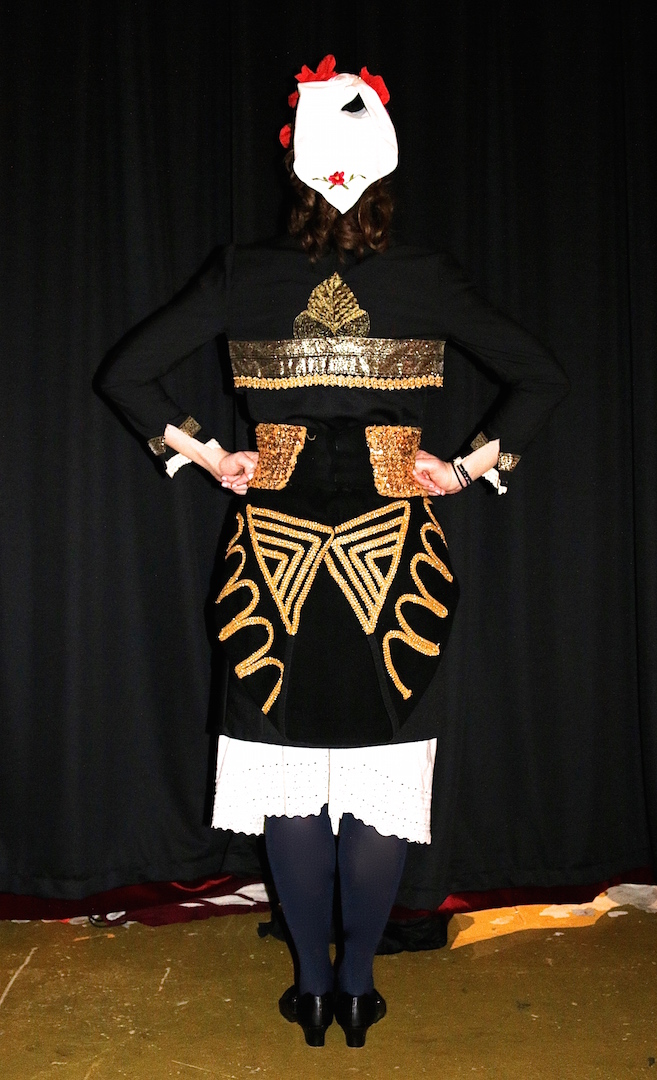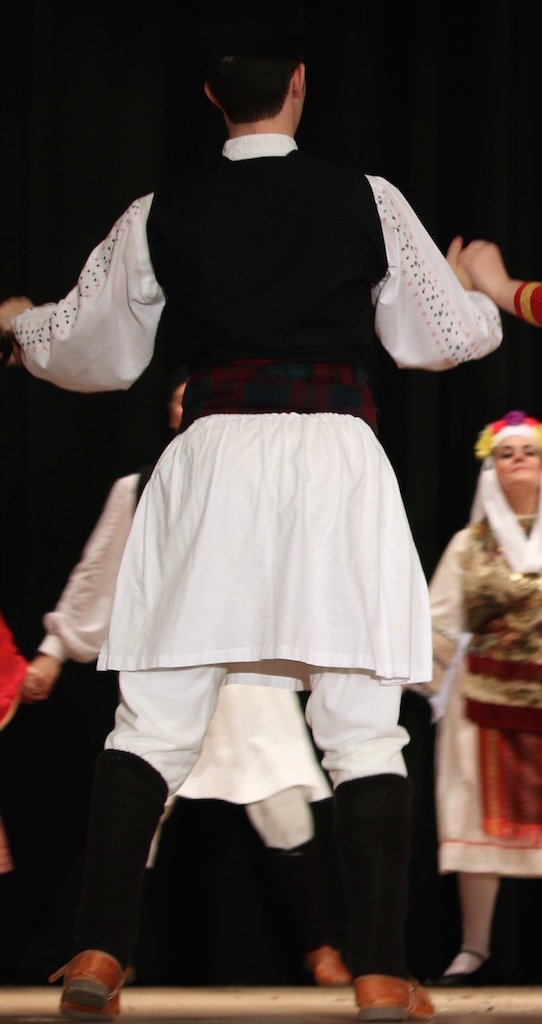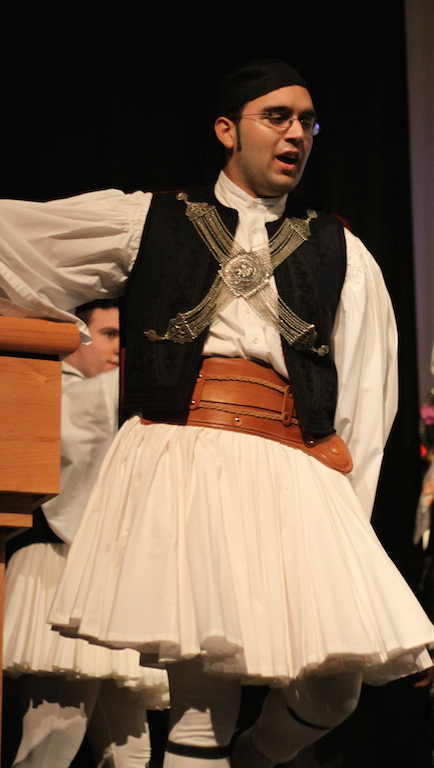
Macedonia
Macedonia is a historical region that now is located in parts of the modern countries of Albania, Bulgaria, Greece, Kosovo, Macedonia, and Serbia. This region once housed the center of the kingdom of Macedonia, which flourished under Alexander the Great’s reign. Several main Macedonian cities are Drama, Edessa, Florina, Kastoria, Katerini, Kavala, Kozani, Serres, Thessaloniki, and Veria.
Popular dances from Macedonia
Baindouska, Dimitroula, Enteka (Kozani), Gaida (Florina), Kageleftos (Ierissos), Karsilamas, Kato Stin Aspri Petra (Drama), Kori Eleni (Drymos), Levendikos (Florina), Macedonia Ksakousti, Marena (Naoussa), Marmarenia Mou Vrysoula (Veria), Moustambeikos (Naoussa), Nizamikos (Naoussa), Omorfoula (Florina), Pousnitsa, Proskinitos (Goumenissa), Raiko, Synkathistos (Veria), Tis Marias (Roumlouki), Tsobanopoula (Veria), Zaharoula (Edessa), and Zaramo (Florina)
Costumes from Macedonia
| This costume originated from Drymos, Thessaloniki. The most important and expensive piece of this costume was the “sayas.” It was traditionally made from red felt and embroidered on the two corners (called the “kapaklikia”) by the local tailor. Once the “sayas” was woven, it was dyed and waxed to prevent damage. In addition, the garment was meticulously cared for since it was not washable. A woolen apron with fringe (the “foundomata”) is tied over a two-meter sash. Silver coins hang on the several thick chains (the “paradelia”) fastened to the apron. A silver coin necklace, which was gifted by a wealthy groom to his bride, is typically worn around the neck. The headdress is composed of a fringed scarf and an embroidered red band (the “renda”). Small gold coins were frequently attached on the “renda” at the forehead. The headdress is also decorated with the “sourgoutsi”, an erect metal symbol from which hangs a few small coins. The stockings were usually dark blue and worn with pigskin shoes, but newly married women would wear red stockings with black leather shoes. |  |
 |
||
| This impressive festive costume, from Roumlouki, Macedonia, combines the ancient Greek traditions and legends of Alexander the Great with Modern Greek style. The silver motifs on the costume represent the armor of Alexander the Great’s warriors. The headgear, which is decorated with multicolored flowers, is strongly reminiscent of the ancient splendor and tradition of battle and is said to resemble the helmets of the ancient Greeks during the era of Alexander the Great. The positions of the embroidered flaps represent the marital status of its wearer. The white represents the purity of the female warriors defending to protect their homeland. |  |
 |
||
| This costume is costume of the married women of Roumlouki, Macedonia. It has many of the same motifs as the costume above, such as the headpiece and the silver designs. One of the main differences is that a black jacket is worn. This jacket signifies the women’s marital status since it is more conservative than the costume pictured above. |  |
 |
||
| This is another variation of the costume from Roumlouki, Macedonia. The main difference is that all of the motifs and embroidery are gold rater than silver. This highlights the wearer’s high social status and wealth, which is why this costume was not seen frequently throughout the region. |  |
 |
||
| This is the festive costume from Episkopi, Emathia typically worn in the summer. It is known in the local dialect as the “poukamiso” or the “foustanela.” The “poukamiso” is tucked into black wool trousers called the “salvari” during the winter. |  |
 |
||
| This costume is from Asvestochori, Thessaloniki and is part of the region’s daily attire. The costume is composed of a pleated skirt, a shirt, a waistcoat, a sash, and leggings. The green motifs seen on this costume differ from the costumes of the surrounding regions. |  |
 |
||
| This is the festive costume from of the Janissaries worn during the Apokries (Carnivale) season in Naoussa, Macedonia. It is also usually accompanied by a mask and a vest of coins. |  |
 |
||
